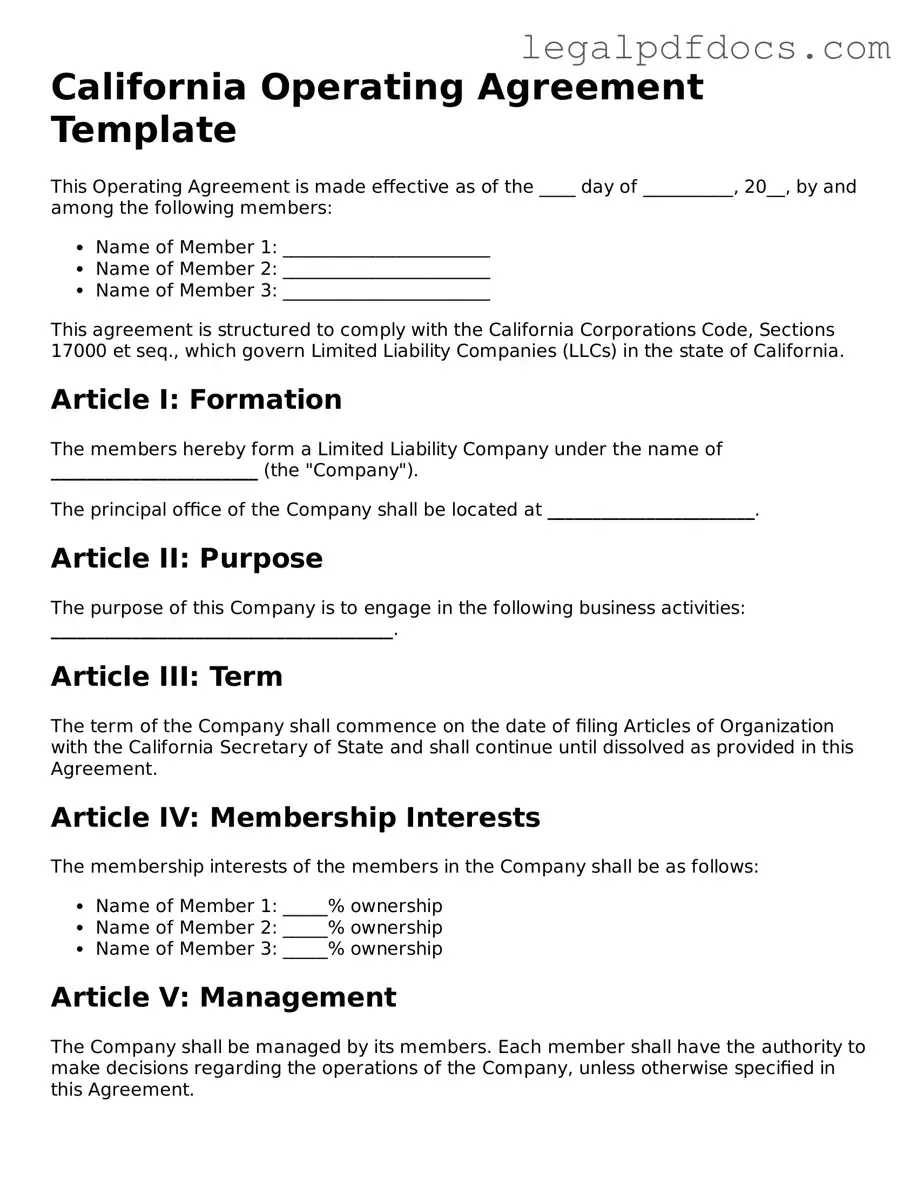Official Operating Agreement Form for California
The California Operating Agreement form is a crucial document that outlines the management structure and operational guidelines for a limited liability company (LLC) in California. This agreement helps establish the rights and responsibilities of members, ensuring clarity and reducing potential disputes. Understanding its importance can lead to smoother business operations, so consider filling out the form by clicking the button below.
Open Operating Agreement Editor Here
